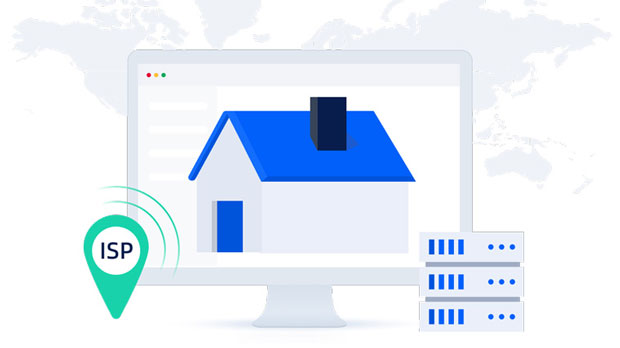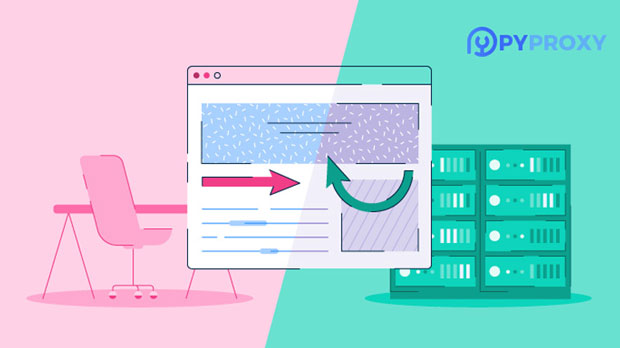The combination of residential proxy services and VPN services has attracted significant attention in recent years, largely due to the growing need for enhanced online security, privacy, and access to geographically restricted content. residential proxies, which offer IP addresses from real residential homes, are becoming more vital for users who require a more legitimate-looking IP for tasks such as web scraping, e-commerce management, and data collection. On the other hand, VPN services offer users a private tunnel through which they can securely access the internet from anywhere. By combining these services, businesses can provide enhanced user privacy, security, and reliability while broadening the spectrum of use cases. This synergy between residential proxy services and VPN services has created a promising market with the potential for exponential growth. 1. The Rising Demand for Privacy and SecurityAs data breaches, identity theft, and privacy violations become more frequent, both individuals and businesses are increasingly prioritizing online security. Residential proxies are seen as a solution to mask a user’s true location, reducing the risk of exposure. VPN services also encrypt online traffic, preventing unauthorized access. The fusion of these two services allows users to not only secure their internet connections but also access content from multiple regions without revealing their actual IP addresses. This has proven essential for many industries, such as finance, media, and e-commerce, where data security and access control are paramount.2. Overcoming Geographical Restrictions and Content AccessThe internet is often segmented by geographical boundaries, with certain content or websites being inaccessible in specific regions. VPN services allow users to bypass these geographical restrictions by routing traffic through a server located in a region where the content is accessible. When combined with residential proxies, users can further disguise their true location, ensuring that their online activity is not easily traceable. This is particularly beneficial for businesses that rely on data collection from different regions, as well as for individual users who wish to access media content from various countries without facing restrictions.3. Enhanced Anonymity and Fraud PreventionThe integration of residential proxies with VPN services provides a layer of anonymity that is difficult to replicate with traditional methods. Residential proxies use real IP addresses from various locations, making it harder for websites to detect and block users based on their IP address. VPNs, when combined with residential proxies, further obfuscate a user's identity by encrypting their traffic. This is especially beneficial for online shoppers, financial institutions, and other users who wish to protect themselves from fraud or surveillance. Fraud prevention is a significant concern for e-commerce websites, where users need to avoid bot attacks and other malicious activities.4. The Impact on E-Commerce and Web ScrapingE-commerce platforms rely heavily on data scraping and analysis to track competitor pricing, inventory, and customer behavior. Residential proxies are commonly used in web scraping as they provide legitimate-looking IPs that mimic real-user traffic, thus minimizing the chances of being blocked by websites. However, scraping from a single region can lead to detection and restriction by websites. Combining residential proxies with VPN services allows users to access and scrape data from multiple geographic locations without detection, expanding the scope and accuracy of their scraping efforts. This combination offers a competitive advantage for businesses that rely on web scraping to optimize pricing strategies, inventory management, and market analysis.5. Market Potential and Growth DriversThe market for VPN and residential proxy services has witnessed significant growth over the past few years. According to various reports, the global VPN market size is projected to expand due to the growing awareness of online privacy risks and increasing government regulations around data protection. The demand for residential proxies is also increasing, as more businesses seek reliable ways to conduct research and monitor competitors. When combined, these two services provide a comprehensive solution that addresses both the privacy concerns and the need for global internet access.Several factors contribute to the growth of this market, including:- Increasing Globalization: As businesses expand globally, they require access to region-specific data, which is often blocked by geographical restrictions.- Rising Cybersecurity Concerns: With cyber threats increasing, businesses and individuals alike are seeking more robust protection methods.- E-Commerce Growth: The booming e-commerce sector drives demand for web scraping and data analytics, which can be more effectively conducted using residential proxies combined with VPNs.- Legal and Regulatory Developments: Stricter data protection laws, such as GDPR, have pushed businesses to adopt stronger privacy practices, leading to higher adoption of VPN and proxy services.6. Potential Challenges in the Combined Service MarketWhile the combination of residential proxies and VPN services holds considerable market potential, several challenges need to be addressed to ensure sustained growth and adoption. These challenges include:- Technological Barriers: Maintaining high levels of anonymity while providing fast, reliable service can be technically challenging. Users may experience slow connections or connection failures when using multiple services simultaneously.- Legal and Ethical Concerns: The use of residential proxies to mask the true location may raise legal and ethical concerns, especially in regions with strict data protection regulations.- Cost and Complexity: Providing a reliable service that combines both residential proxies and VPN services requires significant infrastructure and investment, which can drive up the cost for consumers.Despite these challenges, the market for combining these two services continues to grow due to the increasing demand for privacy and security, as well as the need for broader access to global content.Conclusion: The Promising Future of Combined Residential Proxy and VPN ServicesIn conclusion, the fusion of residential proxy services and VPN services has significant market development potential. The combined offering caters to the increasing need for privacy, security, and global content access, making it a valuable solution for businesses and individuals alike. As the demand for data protection, secure online transactions, and unfiltered access to content continues to rise, the market for these services is expected to expand rapidly. However, overcoming the technological, legal, and cost-related challenges will be key to unlocking the full potential of this market.
Aug 01, 2025



































































